Flexible pouches have emerged as one of the fastest-growing packaging formats across industries due to their versatility, convenience, and sustainability benefits. This blog will explore some commonly used flexible pouch materials, their unique properties, and their ideal applications.
![]()
Benefits of Flexible Pouches
One of the benefits is cost-effectiveness compared to rigid packaging like cans, bottles, or jars. Pouches utilize less material resulting in lower production costs as well as reduced transportation expenses. Their high product-to-package ratio also minimizes material waste. The shape flexibility allows for innovative structural designs that stand out on retail shelves. Flexible pouches also have a smaller environmental footprint, generating less greenhouse gas emissions during manufacturing and transportation. Additionally, excellent barrier properties help extend product shelf life. With growing consumer preference for sustainable packaging, flexible pouches check many boxes as a resource-efficient packaging format.
Understanding Materials and Structures
Flexible pouches are constructed from multi-layer laminate film structures designed to provide the necessary barrier properties for product protection. These laminate structures typically consist of an outer layer for printability and durability, an inner sealant layer compatible with the filling product, and one or more barrier layers sandwiched in between.
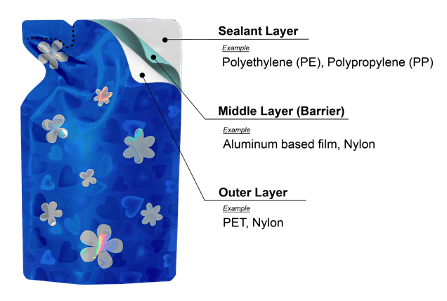
Flexible Pouch Basic Materials
- Polyethylene (PE):
It is one of the most widely used materials in North America. PE can be heat-sealed easily, allowing for efficient and secure closure of flexible pouches. This property is essential for maintaining the freshness and integrity of the packaged product. PE pouches can be transparent or pigmented.
- Polyethylene Terephthalate (PET):
PET provides a great oxygen barrier along with clarity and stiffness. It protects products from oils, aromas, and flavors while remaining resealable.
- Aluminum Foil (AL or Alu):
Aluminum foil offers superior light, moisture, and gas barriers, ideal for extending shelf life. It is often combined with polymer films for puncture resistance.
- Polypropylene (PP):
PP film is affordable, transparent, moisture-resistant, and can be treated for heat-sealability. It provides a good barrier at a low density.
- Ethylene Vinyl Alcohol (EVOH):
With an excellent oxygen barrier, EVOH preserves freshness and flavors in oxygen-sensitive products. It is often combined with nylon for puncture resistance.
- Polyamide (Nylon):
Polyamide is known for its mechanical strength and puncture resistance. It is commonly combined with foils or EVOH to boost barrier properties.
Each layer serves a crucial purpose – for example, oriented polypropylene (OPP) adds stiffness, polyethylene provides moisture protection, while nylon or polyesters impart thermal resistance and mechanical strength. The combination of these layers is tailored to meet specific packaging requirements, ensuring the ideal flexible pouch structure to extend shelf life and preserve the integrity of the contents.
Flexible Pouch Applications and Materials
Here are some examples of flexible pouch applications and the material combinations used:
- Coffee Bean
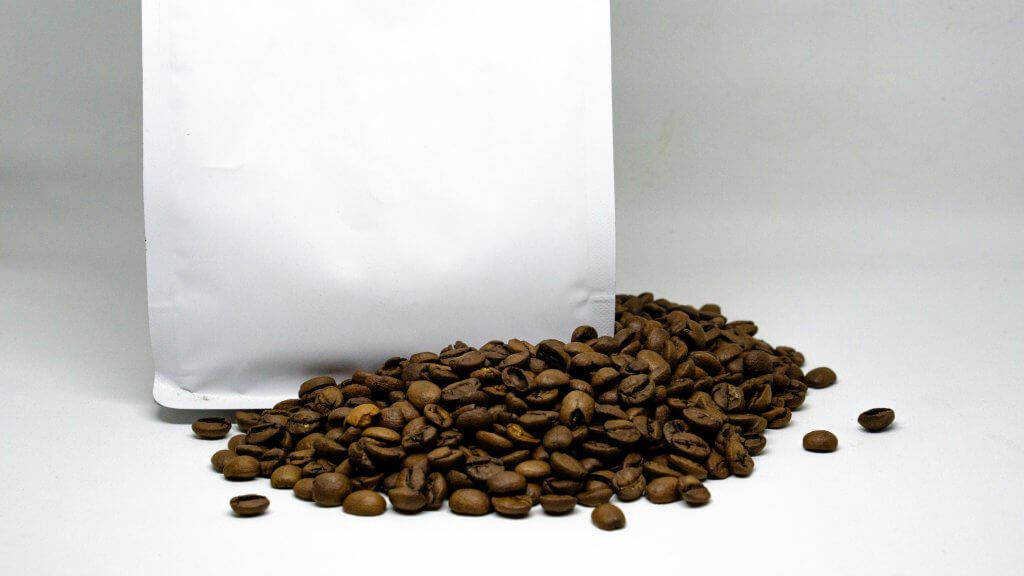
PET/AL/LLDPE: PET provides strength and barrier properties, aluminum foil offers excellent barrier against moisture, light, and oxygen, and PE ensures sealability and additional moisture protection.
PET/MPET/PE: Similar to PET/AL/PET, metalized PET (MPET) substitutes aluminum foil.
PET/Nylon/PE: Nylon provides excellent puncture resistance and barrier properties against oxygen and aroma transmission, making it suitable for coffee packaging.
PET/AL/Nylon/PE: Add a polyamide (nylon) between the aluminum foil and PE layers for enhanced barrier properties against moisture, oxygen, and aroma transmission.
- Ready Meals
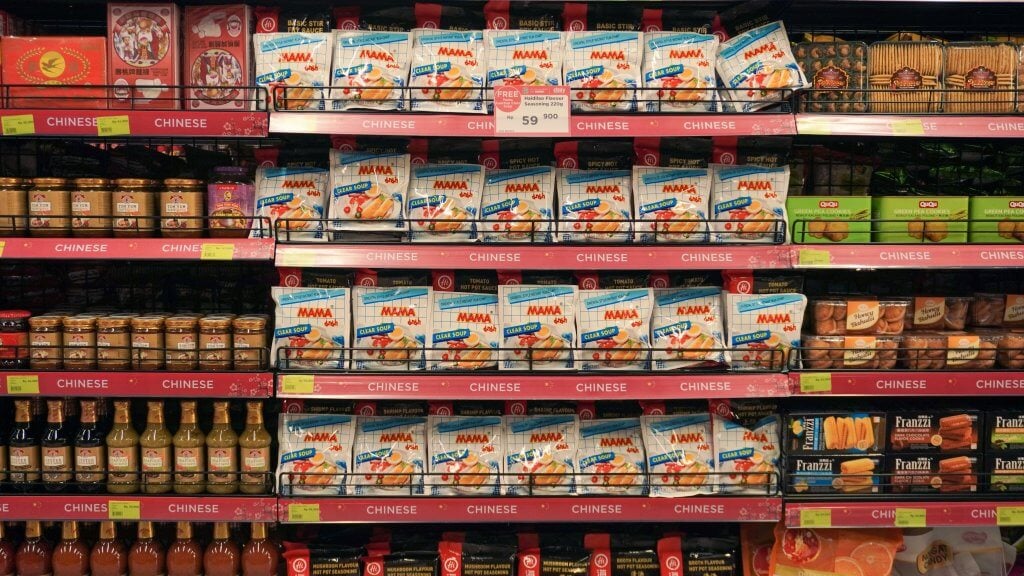
PET/AL/Nylon/PP: The foil layer offers a superior barrier, while nylon adds puncture and abuse resistance for the retort process.
PET/AL/PP: Similar to PET/AL/Nylon/PP structure but without the nylon layer. This combination still provides good barrier properties against moisture, oxygen, and light, while PP ensures heat resistance and sealability.
PET/AL/EVOH/PP: By incorporating a layer of EVOH, this structure offers excellent oxygen barrier properties, crucial for preserving the freshness of retort or ready meal products.
- Beverages
PET/PE: This structure consists of layers of PET for strength and barrier properties, combined with PE for sealability and flexibility. It is commonly used for packaging water, juices, and other non-carbonated beverages.
PET/EVOH/PE: EVOH provides an excellent oxygen barrier, while PET and PE layers offer clarity and moisture protection.
PET/Nylon/PE: This structure offers enhanced puncture resistance and barrier properties against oxygen and aroma transmission. It is suitable for packaging carbonated beverages and flavored drinks.
- Snack Foods (Chips, Nuts)
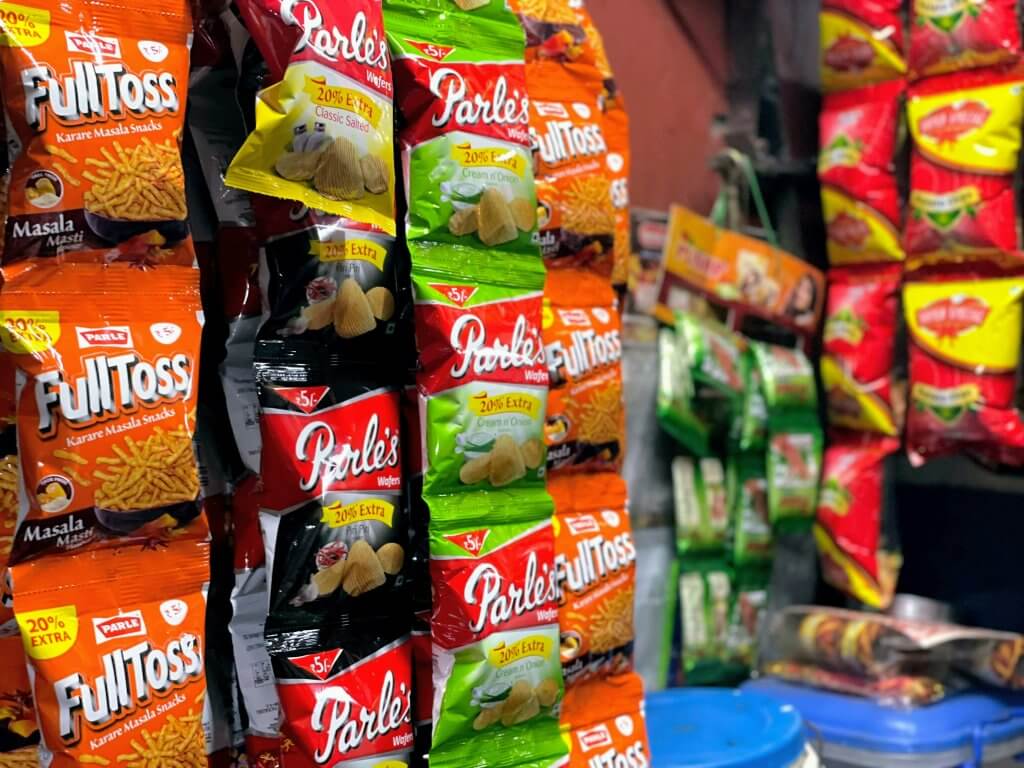
OPP/PE/MPET: Metalized PET offers light barrier, PE is moisture resistant, and oriented PP (OPP) provides stiffness.
PET/PE: This structure consists of layers of PET for strength and barrier properties, combined with PE for sealability and flexibility. It is commonly used for packaging various types of snacks such as chips, pretzels, and popcorn.
PET/AL/PE: Aluminum foil provides excellent barrier properties against light, oxygen, and moisture, making it suitable for protecting sensitive snacks, such as nuts, dried fruits, and jerky.
PET/EVOH/PE: This structure provides excellent oxygen barrier properties, making it ideal for packaging snacks sensitive to oxygen exposure, such as potato chips and cheese puffs.
- Makeup/Cosmetic
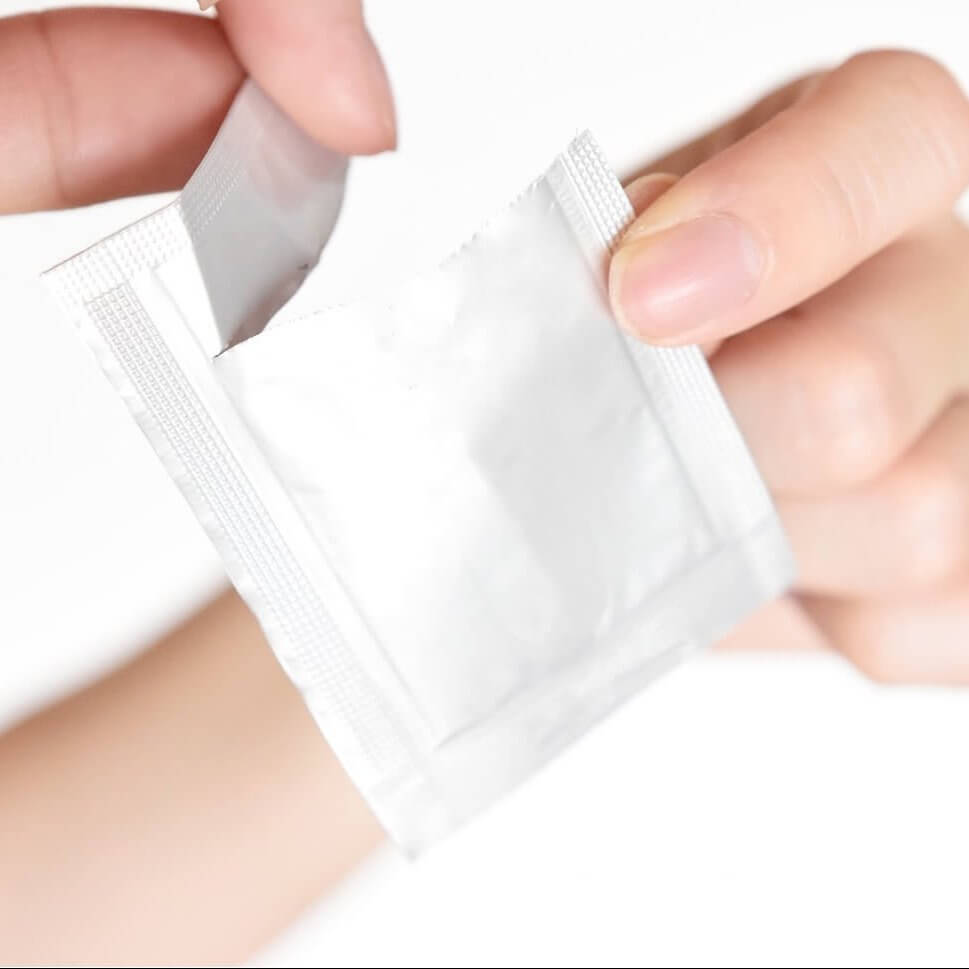
PET/LLDPE: Clean, clear laminate protects product integrity while allowing the contents to be visible.
PET/AlOx/PE: Aluminum oxide coating between PET and PE films provides excellent moisture and oxygen barrier properties suited for cosmetics prone to drying out or oxidation, such as creams, lotions, and serums.
PET/EVOH/PE: EVOH oxygen barrier core prevents cosmetic formulas from degrading due to oxidation.
PET/Nylon/LLDPE: Nylon layer adds puncture resistance, making it ideal for cosmetic pouches intended for rugged shipping conditions.
- Pet Foods
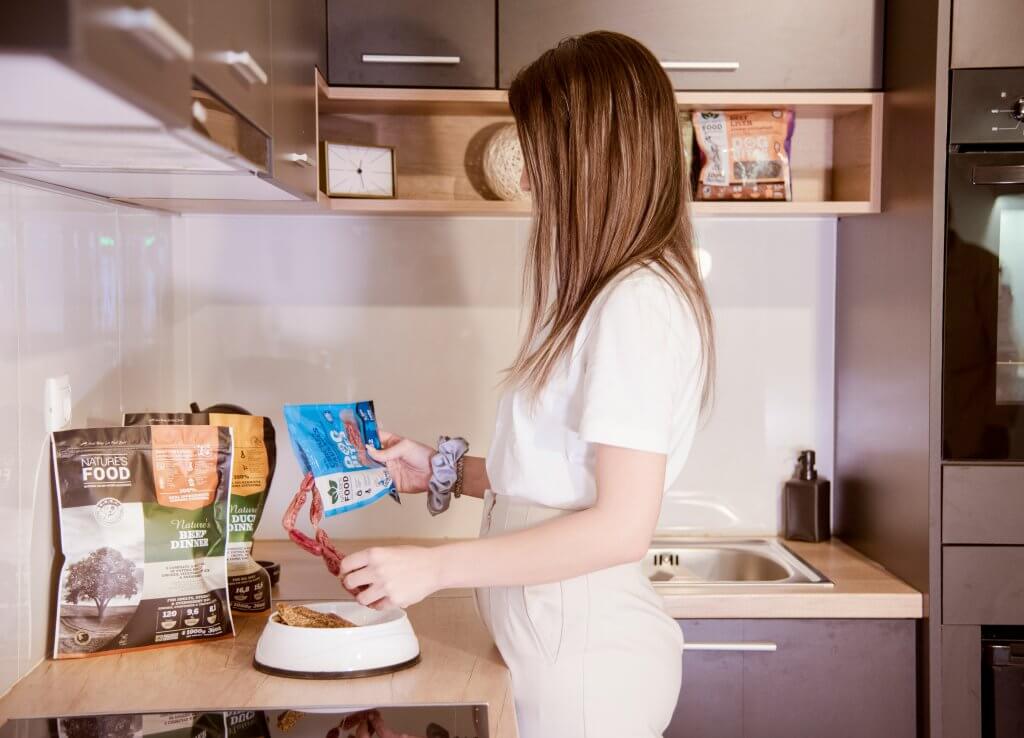
PET/AL/PE: Aluminum foil provides excellent barrier properties against light, oxygen, and moisture, making it suitable for protecting sensitive pet foods such as wet or semi-moist varieties.
PET/EVOH/PE: This structure provides excellent oxygen barrier properties, making it ideal for packaging pet foods sensitive to oxygen exposure, such as raw or natural foods.
PET/Nylon/PE: This structure offers enhanced puncture resistance and barrier properties against oxygen and aroma transmission. It is suitable for packaging premium pet foods or those with high-fat content.
PET/AL/Nylon/CPP: Nylon provides toughness and puncture resistance for rough treatment and shipping.
These are just some examples, and the variety of material combinations allows brands to leverage different materials to customize. Each flexible pouch material offers unique functional advantages matched to different product characteristics. Many shelf-stable and perishable items rely on tailored multilayer laminate structures to optimize protection and shelf-life.
Flexible Pouch Printing Options
Flexible pouches offer a wide array of printing and decorative finishing options to make brands stand out on crowded retail shelves. Popular printing techniques like rotogravure, flexography, and digital allow for vibrant graphics, photorealistic imagery, and attractive designs to be rendered on pouches. Flexography is one of the most commonly used printing methods in the United States. However, due to the high equipment and setup costs for cylinders and the requirement of higher MOQs, digital printing is gaining popularity.
Testing and Validating Performance
To ensure flexible pouches deliver on their promised performance and protection, they must undergo testing and validation processes. A variety of standardized test methods outlined by ASTM (American Society for Testing and Materials), ISTA (International Safe Transit Association), and other governing bodies evaluate critical parameters like seal integrity, crack resistance, puncture strength, and burst tolerance. Accelerated and real-time shelf-life studies assess the laminate’s barrier properties over time by monitoring gas composition, moisture ingress, and sensory changes. Distribution testing, such as drop test, vibration table analysis and compression evaluates the pouch’s ability to withstand the rigors of the supply chain journey. Moreover, regulatory validations like FDA food contact safety, along with checking for migratory components and substance inertness solidify the pouches’ suitability for food and pharmaceutical packaging. Flexible pouches can be certified fit and safe for commercial applications only after successfully clearing these tests across different performance metrics.
Conclusion
As flexible pouches continue to penetrate new markets and product categories, it’s clear that no single material can address every packaging need. Flexible pouches’ true strength lies in combining different films into customized multilayer laminate structures. By strategically layering materials like PE, EVOH, and oriented PP, brands can create high-performance pouches tailored to their products’ unique requirements. From maximizing the shelf life of perishable foods to providing protective barriers for pharmaceuticals – the suitable material mix is critical. At the same time, innovations in recyclable monomaterial and post-consumer recycled pouches are making flexible packaging even more environmentally friendly. As consumer demands and packaging regulations evolve, we can expect pouching materials and formats to adapt. Understanding the advantages and applications of these versatile materials empowers brand owners to unlock the full potential of the flexible packaging revolution.
Flexible Pouch Manufacturer
ZACROS Group manufactures flexible pouches for a wide range of products, from beverages to cosmetics. We have extensive knowledge and experience of flexible pouch materials and structures. Contact us to connect with flexible pouch experts today!